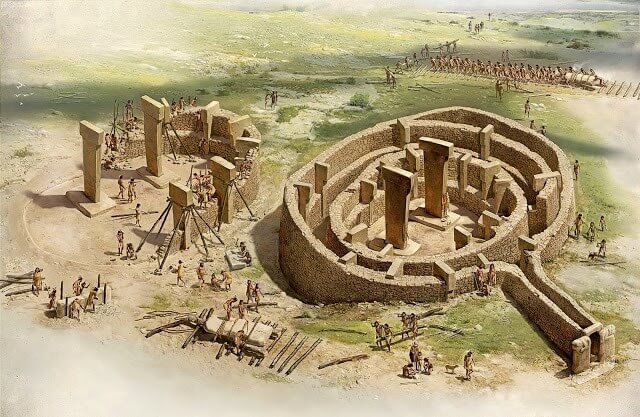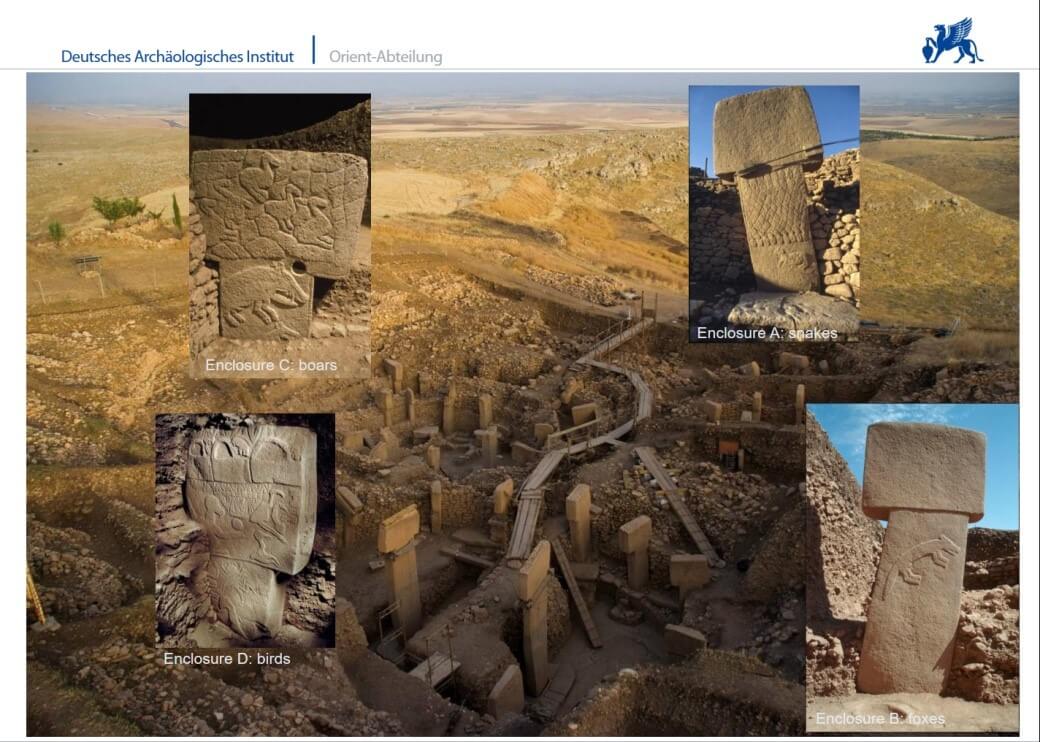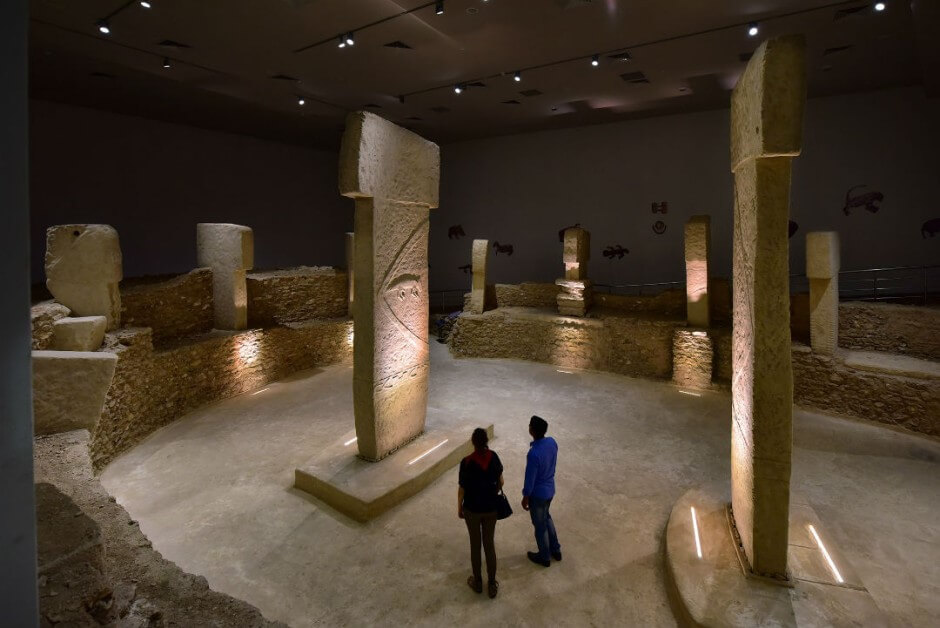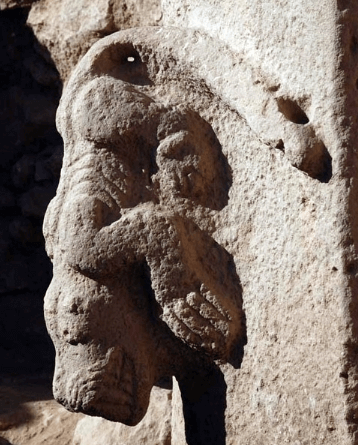Is Göbekli Tepe the Oldest Temple in the World?
Based on everything we know, Göbekli Tepe shouldn’t exist. Located over 20 years ago on the Syrian border of Turkey it’s mystery remains unsolved. Why on earth was Göbekli Tepe built? It sits smack in the middle of the fertile crescent, where earliest humans began the agricultural revolution. Here lies ground zero for modern civilization, or as some have dubbed it, The Garden of Eden. In 2018, it was added onto UNESCO’s World Heritage List. For many reasons, it remains as one of the most baffling archeological sites on the planet. Is Göbekli Tepe the Oldest Temple in the World? Or is it much, much more.

An artist rendition of the stone circles of Göbekli Tepe. Source National Geographic.
Göbekli Tepe is the oldest megalithic structure ever found on earth. Discovered in modern-day Turkey, and still yet to be fully excavated, it dates to a baffling 12,000 years old.
It’s not just the oldest site; it’s also the largest. Situated on a flat, barren plateau, the site is a spectacular 90,000 square meters. That’s bigger than 12 football fields. It’s 50 times larger than Stonehenge, and in the same breath, 6000 years older. The mysterious people who built Göbekli Tepe not only went to extraordinary lengths they did it with laser-like skill. Then, they purposely buried it and left.
These peculiar facts have baffled archeologists who have spent 20 years unearthing its secrets.
When was Gobekli Tepe Found?

The site is located close to the Syrian border, in the Southeastern Anatolia Region of Turkey, about 12 km (7 mi) northeast of the city of Şanlıurfa. Göbekli Tepe means in English, Pot-Belly Hill.
The first whispers of Göbekli Tepe came when local farmers found limestone poking out of the ground. In 1963, archeologist Peter Benedict conducted the first survey of the site. He described a “complex of round-topped knolls of red earth.”
Benedict was correct, but only in the most superficial way. He could have never have realized just how much he had understated what Göbekli Tepe really was.
Those pot-belly hills were the deepest and most ancient echoes of the human origin story. At the time, no ancient site suggested that Neolithic man could produce giant stone monuments.
The pillars remained sleeping under the earth until the arrival of someone who could recognize them. In 1994, German Archeologist, Klaus Schmidt, visited the site.
He instantly recognized that Benedict’s report had been wrong. The “knolls” he saw, were human-made mounds, and the flint shards crunching underfoot had been shaped by Neolithic hands.
Smith was familiar with Turkish Archeology, working nearby at Nevalı Çori. After it was flooded by Atatürk Dam, becoming part of the floor of Lake Atatürk, Schmidt was looking for a new Stone Age site. He was immediately drawn to Göbekli Tepe by the similar T-shaped pillars as Nevalı Çori.
Schmidt knew he had a big decision to make.
He would spend the rest of his life studying Göbekli Tepe.
What is Göbekli Tepe?
The excavated stone circles and T-shaped pillars of Göbekli Tepe. Source
Klaus Schmidt began the investigation of Göbekli Tepe with Heidelberg University in 1994. He would spend the next 20 years there until his sudden and unexpected death in 2014.
Schmidt and his Turkish wife bought a house in the nearby city of Urfa. He and his team would spend a morning at the site, returning for a late lunch and an afternoon processing the days finds.
Today, the site is opened under a modern shaded roof where visitors can walk the site.
The archeological findings that have unfolded over two decades are nothing short of astounding.
Göbekli Tepe is made up of a collection of stone circles containing ‘T’ shaped pillars. The circles were placed on flat bedrock some weighing in excess of 16 tons.
The site is so big, more than 90% of it remains underground. Currently, the exposed part is about the same size as Stonehenge. The rest of the staggering arrangement of stone circles were found with ground penetrating radar.
The T-shaped standing stones were placed in the center of each stone enclosure. It’s thought they depict people, perhaps those that directed the building of the site. The largest of the stones are up to 17 feet high. That’s the size of a very tall giraffe.

The T-Shaped Pillars of Göbekli Tepe in a Turkish Museum. Source
It’s unknown how the builders were able to shape, move and place stones of this size.
Half-a-mile across a limestone plateau from the main mound is a 22ft-long T-shaped monolith. It was never finished or moved to the main temple site.
Beyond the sheer scale, the site is geographically aligned to the north-south poles. Other researchers are revealing possible astronomical alignments and purposes. One including, as an observatory for Sirius.
The precision, mystery, and beauty of Göbekli Tepe boggle the mind.

The enclosures of Göbekli Tepe show ancient astronomy and north-south pole alignment.
The world’s oldest artwork and stone carvings
Walking through the enclosures of Göbekli Tepe reveals depictions of animals, symbols, and human-like figures.
There are both high relief and low relief carvings found throughout the site. The precision and skill associated with these carvings are nothing short of remarkable.
A high relief carving means that the stone is cut on the outside of the larger piece. It is a complicated and advanced technique in stone masonry even by modern standards.

Precision high relief stone masonry of Gobekli Tepe.
The many animals depicted include foxes, birds, lions, scorpions, snakes, and boars. There is a scorpion the size of a small suitcase, and a jackal-like creature with an exposed rib cage.
The exact meanings of the carvings appear to be unknown. On one pillar a row of lumpy, eyeless “ducks” float above a boar, with an erect penis.
Another relief consists of the simple contour of a fox also with a distinct penis. Most mammals represented at Göbekli Tepe are visibly male, except for one fox, which, in place of a penis, has several snakes coming out of its abdomen.
Perhaps the most debated composition portrays a vulture carrying a round object on one wing; below its feet, a headless male torso displays yet another erect penis.
What happened at Göbekli Tepe?
In trying to find the age of Göbekli Tepe, carbon dating revealed a strange trend.
Whoever made Göbekli Tepe wanted to preserve its memory. To Schmidt’s astonishment, analyses of the soil around Göbekli Tepe revealed that it was purposely buried.
The materials used to fill the site were unusually uniform and dated to the same period. If this occurred naturally, there would be a spread of dates found in the material of the soil. The entire complex is also built on a hilltop, which usually means that soil should erode and not be deposited.
This site was active for about 1000 to 1500 years until the entire complex was buried around 10 000 years ago.
During their centuries of use, the circles and pillars were built and filled with debris. New pillars were started on top of or alongside the old ones. The circles thus stand at different depths and layers in the hill. Today, they have been connected by various wooden scaffolds, ladders, and walkways.
Related Post
A shocking documentary proves that mermaids do exist
SHOCKING Revelation: Thuya, Mother of Queen Tiye, Was the Grandmother of Akhenaten and Tutankhamun—What Ancient Egyptian Secrets Did She Leave Behind?
Breaking News: Astonishing Discoveries at Karahan Tepe Confirm an Extraterrestrial Civilization is Hiding on Earth, and NO ONE Knows!
Breaking News: Researchers FINALLY Discover U.S. Navy Flight 19 After 75 Years Lost in the Bermuda Triangle!
NASA’s Secret Investigation: Uncovering the Astonishing Mystery of the UFO Crash on the Mountain!
Explosive UFO Docs LEAKED: Startling Proof That Aliens Ruled Ancient Egypt!